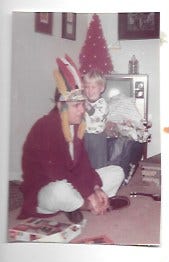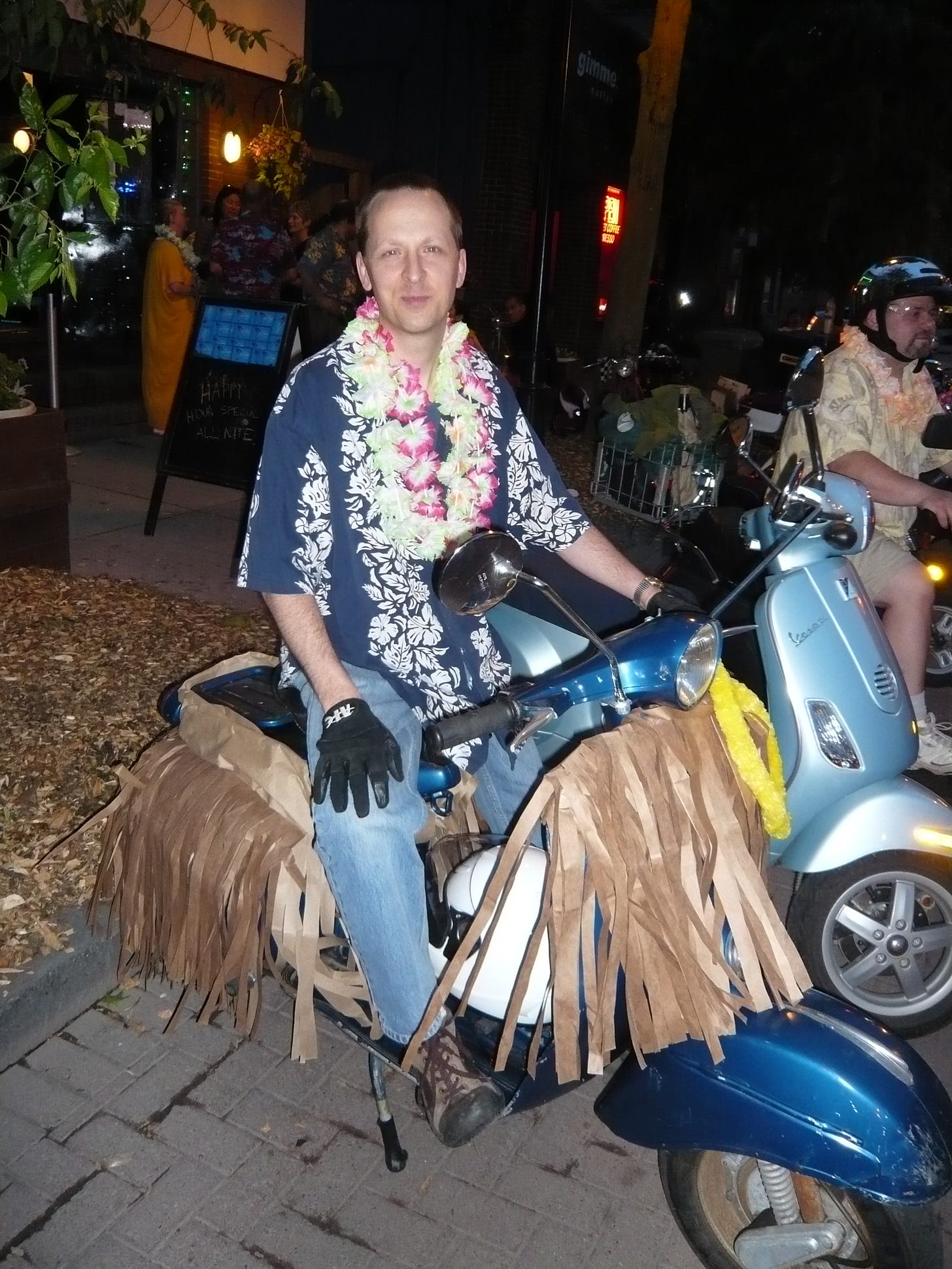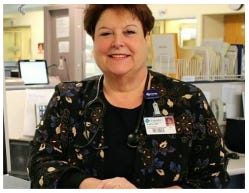
Stay steady
[ad_1]
PAST
Legos were my thing for a long time. Wooden blocks, Lincoln Logs, and Erector Set, we had those too, but Legos kept me coming back for more. The Legos I played with were a mish mash of accumulated sets, with many multicolored and interchangeable parts. They were from an earlier time, before the hyper-specialized Lego sets with more sophisticated and realistic shapes. My most common creations were police cars, fire trucks and tractor trailer trucks. I would dump my bin out on the floor of the rec room and crawl around for hours picking out pieces. The worn holes in the knees of my Sears Toughskins pants were evidence of my dedication. BTW, I flinch at the thought of those Toughskins, which were so not cool. I couldn’t wait to be a big boy and wear the much cooler Levis jeans.
One of the habits I developed in my Lego trances was to not pay very much attention to my hunger. It wasn’t that I didn’t get hungry, and when I tell you that I’ve long been on a see-food diet, I see it and I eat it, I mean that. But the work at hand had my attention. I was searching for the four circle piece with the car grill on it, or the eight circle piece with POLICE on it, or the black circular twisty piece that connected the tractor to the trailer. If you know Legos, you probably know what I mean. Hunger didn’t hold the same pull as creation.
It turns out that playing with Legos served me well in several ways as an adult. Until I finally got fed up with never getting a break during a twelve hour shift and decided to help lead a unionization effort, familiarity with hunger was the quintessence of my nursing career. I wish that I’d known the value of intermittent fasting before I started my nursing career, as I wouldn’t have been so furious in my hunger.
There are always things to figure out and fix when you’re a nurse, especially in a busy Emergency Department. When the monitor would go on the fritz, the bed stopped working, or the computer refused to cooperate, I would often say, “It’s okay, I played with Legos,” and then set about troubleshooting. Not that I was always successful, but more that I was willing and able to give it a try. This can-do attitude has been invaluable in the uncharted territory of treating PASC and COVID vaccine injury. We are compelled to identify and try safe, repurposed therapeutics to help our patients get better, but because no one person responds in the exact same way, we need to initiate multiple trials of therapy.
MORE RECENT PAST
I love France. And French food. And French women. Yes, my American wife of nearly thirty years knows this. It took me four trips to France and some seriously dark moments to finally figure out that French women were bad for my health. I have absolutely nothing against them, and in fact quite the opposite. The way they move the vowels and consonants with their mouths; the way they move period. Their strong scents of perfume, sweat, and food from the magnificent dishes they are creating in the kitchen.
There are three specific French women from my past who come to mind. Brigitte continuosly mystified me with the delectability and variety of what she could concoct from some leeks, a few eggs, potatoes, cheese, and the meat du jour. The fastest path to my heart is indeed through my stomach.
Boy can French women dress. Clotilde’s hair was always coiffed, and she would have just of touch of lipstick. She wouldn’t be caught dead in sweatpants, not even at home. Not when I knew her anyway. The fashion sensibility didn’t stop on top. I’ve never seen underwear and bras like that in the United States. Do they keep the good stuff in France and send the seconds out for export?
French women can pout like no others. I can’t quite catch it in writing, but it’s something like the movement your lips make when you’re blowing a quick puff of air, and make a sound like a pfff. Seriously. I never looked this up, but when I did, there is was. Yup.
1. Pfff
It might sound (and look) a bit silly but this word is a staple of French conversation and used in the right way, it will give your spoken French a bit of native attitude.
Pfff often goes hand in hand with a facial expression that exudes boredom or dislike because it is used to convey contempt, disdain and scorn.
I’m a recovering people pleaser, and pfffs are a way of life in France. Charlotte’s sharp regard and her pfff would slay me. It’s so much worse when it’s directed at you by a beautiful French woman.
Ultimately, French women were just too sophisicated for me. I could not get a handle on “La Seduction”. In case you are as mystified by this as I was, check out the book La Seduction: How the French Play the Game of Life by Elaine Sciolino. When I read this book in my forties there were more lightbulbs going off in my head than flashes at an outing of Taylor Swift and Travis Kelce. Honestly, I tried to keep up, but ultimately I had to leave it to French men. It seems like they enjoy talking as much as French women. I’m inclined to think foreplay is not four hours of political discourse followed by thirty minutes of sex, followed by another hour of political discourse.
So when did I reformulate my position on French liasons and pin my hopes on an American woman? Well, I came back from France in the Winter of 1994, after months of hard work on a farm, and a misadventure of pfffs, to the warm smile, loving arms and kind heart of the lovely lass who had seen me off at the airport in 1993. Somehow it all came into focus, kind of how the surface of a pond settles into still reflection again after a stone drops beneath the surface.
My beautiful American bride is big-boned, wears a Carhart jacket, and can handily beat me in an arm wrestle. She used to swing a hammer building houses with the boys. She is about the smartest commentator on political events that I know, but it doesn’t take four hours to get to kissing. She has a closet full of flannel and never wears lipstick. She is also a damn good cook.
I will always treasure the picture of her standing in front of a French impressionist masterpiece in La Musee D’Orsay: she was the only woman in the joint wearing a plaid flannel shirt and sturdy hiking shoes, as les femmes francaises floated by in their slim tight dresses and princess flats. As The Rolling Stones sang, sometimes you get what you need.
PRESENT
Three months ago I began leading a Zoom support group for patients who had post acute sequelae of Covid (PASC) and injury from the Covid shots. This wasn’t just an act of charity, because I needed it myself. I’m not a psychologist or psychiatrist, but since the age of fourteen, I have been involved in a type of peer counseling, called RC or Reevaluation Counseling or Co-Counseling. The parents of my best friend in high school, the same good people who brought me into the fold of Quakerism, also introduced me to RC. I have spent thousands of hours counseling with others, as well as leading support groups, teaching classes, organizing workshops, and participating in the workshops.
RC dramatically changed the course of my life. It gave me some really important skills around listening and healing. In my 20s I was spending 15-20 hours a week in counseling sessions. I was so dogmatic at that time that I held it out as a make or break requirement of an ongoing relationship with my beloved spouse. Ultimately, I think she has become a much more effective and balanced counselor than me. For me, RC was the Truth, the Way and the Light.
Over time RC lost it sparkle for me. I’ve never stopped using the tool but I found that it didn’t adequately address the issue of suffering. In 2005 when I helped lead an effort to establish an integrated free clinic here in Ithaca, New York I had to back off of my RC commitments. At the time it seemed like a logical next step of putting my learning into action to try and change the world for better.
We all have stories about the surreal way in which our lives changed during the pandemic. The response of the leadership of the RC community and its participants was one of the more bizarre dynamics which I witnessed and continue to observe. Essentially the community bought the narrative. Just like my beloved, progressive, liberal Quakers. That wasn’t as surprising to me as the politicization of the organization and community where Trump became the devil incarnate and people who made the brave choice to not get vaccinated, began to be excluded and treated as if they were not acting rationally. The very organization which I believed was built upon the idea of trusting one’s independent thinking fell for the hypnotism, hook line and sinker.
As I have developed clinical expertise, treating thousands of patients for PASC and vaccine injury, I waded into the online discussions of the RC community to try and share some information. The response was mixed. There was a small number of furtive, private appreciations. There were some very strident, public counter arguments, some of which rose to the level of personal attacks. Ultimately, with some finality, I was instructed by the New York State and national leadership to cease and desist sharing my “opinions” which had no place within the discussions of the counseling community.
In my correspondence with the leadership, it became evident that their perspective was informed by articles in the New York Times, directives from the CDC, articles in Nature, and the guidance of two physicians who participated in the counseling community. One dynamic which surprised me was that people who have known me almost my whole life as a person of blunt honesty and integrity, as well as being a capable clinician, would so quickly deride and dismiss the lifesaving information which I tried to gently share.
One of the most uplifting consequences of my efforts to share was that I became connected with another co-counselor, who has been struggling with PASC. In comparison to the very knowledgeable clinicians within the FLCCC circles and beyond, I think that she is one of the most intelligent, and well informed lay people I have the privilege of knowing. While I have been silenced with regard to the RC community, she continues to persist within the organization to try and communicate the urgency of our predicament in a relaxed and loving way.
One of the immediate lessons that I have taken from this experience is to reconsider the lens through which I’ve viewed the world for most of my life and connection with RC. In essence, people in RC think that they have a corner on the market of rationality, and if they could only get the rest of the world to understand their perspective and utilize their tools the world would become a more peaceful and cooperative place. I think this is actually a very limited and dangerous perspective, which will ultimately lead to a higher proportion of illness and death within the participants of that community as they continue to submit themselves to Covid boosters. It is also a perspective which I need to consciously avoid.
There is no standard of care in treating PASC and vaccine injury, but those of us aligned with the FLCCC Alliance are doing our best to identify the scientific basis for the treatments which we utilize and observe for benefit, neutrality and side effects. Nobody, not even me, is an expert on this subject.
In the meantime, those of us who think that we have some insight that could be helpful to others, face the struggle of effectively communicating that in conversation with the people in our lives. In our support group last week, we spent some time on this subject, and it raises the idea of moral injury. Do we hold our tongue because every time we try to share others reject our guidance and may even break off communication and relationship with us? Certainly, clinicians such as myself, and Pierre have greater responsibility to share what we know publicly because of the ethical and moral commitments we have made to healing. But do you as an individual person have the same level of responsibility?
What we may anticipate—and fear— is that when the day dawns in which the majority of the population understands that we have been duped and poisoned, and are sickening en masse because of that, will the people around us turn on us, and claim that we withheld life-saving information? We won’t know until we get there.
In the meantime, I have a few suggestions. One is to go to the FLCCC Alliance website and become part of the online community there. It is a new initiative to try and establish a virtual space in which clinicians and lay people can engage in dialogue, which is not being censored, and which is scientifically based. Second, I would abide by the idea that we have two ears and one mouth. We should listen twice as much as we speak. Although I am not brief in my Substack, by any means, I try to be brief when there is an opportunity to discuss these matters with an individual.
Respect the innate intelligence of other human beings, give them the space to come to their own conclusions, and hopefully return to you with questions. My need to save others doesn’t override their need and right to exercise free will. Our urgency and strident tone will not persuade people that we are accurate in our perception and ideas about correct interventions.
I learned the hard way that we need to check our egos at the door. I’m still at the beginning exercises of How to Have Impossible Conversations by Peter Boghossian and James Lindsay. We need to prepare ourselves with time spent in nature, meditative repose, and prayer, for the tsunami of sickness which is crashing upon us. We can study the dynamics of grief, and attempt to engage in letting go as we proceed forward. Find your people and endeavor to breakdown the barriers between us. Humanity has not survived this long because of survival-of-the-fittest, but rather from tribal cooperation.
Peace be with you.
P.S. Je suis ravi de voir que la semaine dernière il y a deux nouveaux abonnés français. S’il vous plaît, comprenez cela. Je prends une licence poétique pour essayer de trouver de la légèreté et de l’humour dans la narration. J’apprécie profondément le large éventail d’expressions de l’identité française, qui ne pourrait pas être capturée dans un seul article ni dans une bibliothèque pleine de livres.
[ad_2]
Source link














